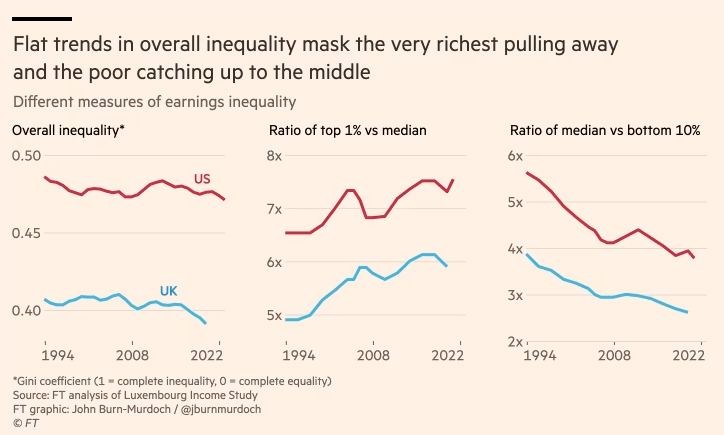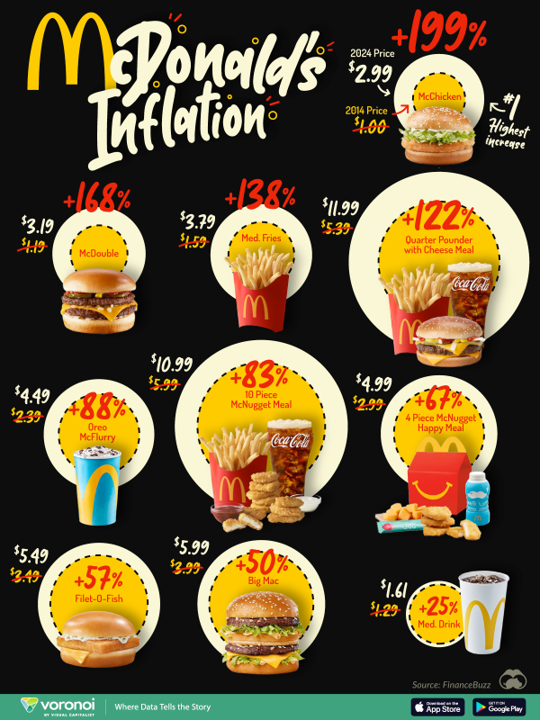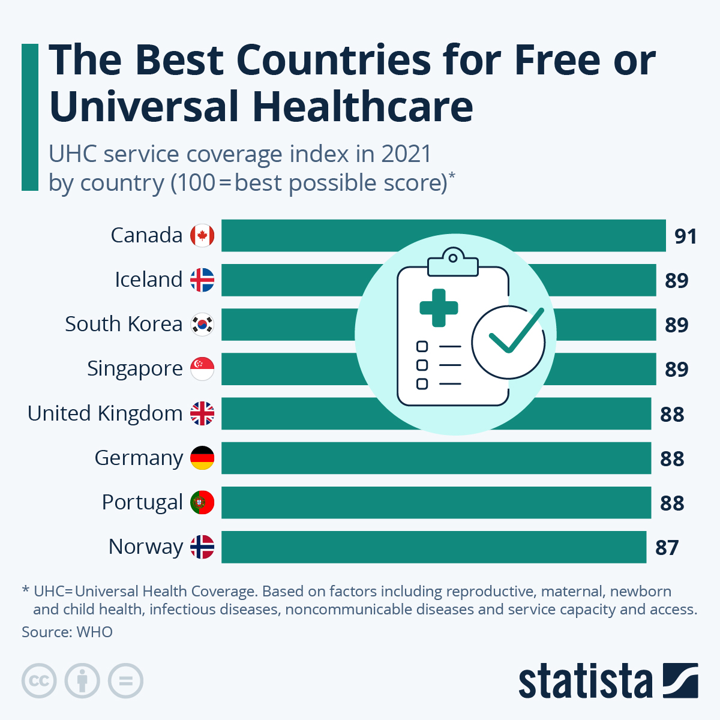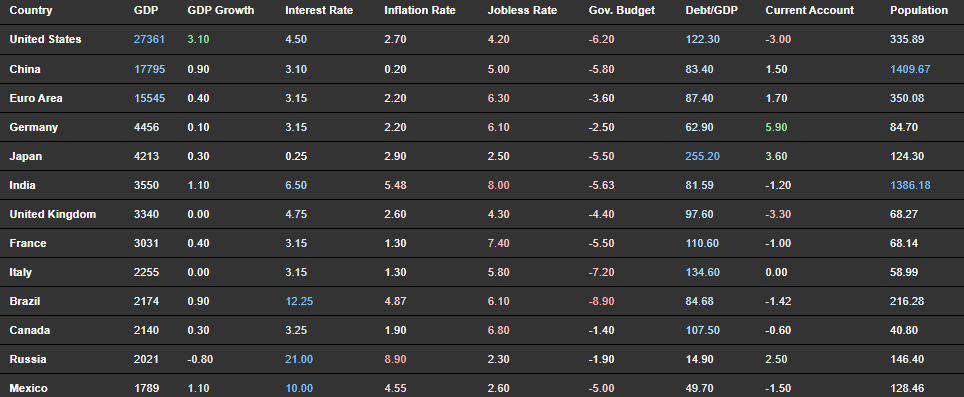Home > Edgenie Sunday Schroll: Newsletter > Evaluation Isn’t Just the ‘Other Side’—Do This Instead
Jump to Section:
Evaluation Isn’t Just the ‘Other Side’—Do This Instead
Inequality hasn’t risen. Here’s why it feels like it has

Summary
A Level Economics Questions:
Possible A Level Economics 25 Marker Question
Infographic of the Week

A Decade of Rising Costs at McDonald’s
McDonald’s, once synonymous with affordable fast food, has experienced substantial price increases over the past decade, as highlighted by Finance Buzz. Analysing 10 consistently available menu items from 2014, 2019, and 2024, the data reveals an average price hike of 100%. Iconic items like the McDouble, medium fries, and Quarter Pounder with Cheese meal have more than doubled in cost, with the McChicken sandwich leading the surge, tripling in price from $1.00 to $2.99. These increases, sourced from official menus and historical records, reflect broader trends in fast food inflation, positioning McDonald’s as the leader in both market presence and rising costs.
Chart of the Week

Global Health Coverage: Progress and Inequalities
According to the WHO's World Health Statistics 2024, Canada leads globally in essential healthcare coverage, scoring 91 out of 100, followed by Iceland, South Korea, and Singapore. The report highlights stark inequalities, with countries like Somalia scoring just 27. The WHO monitors universal health coverage through indicators such as essential service access and financial protection, aiming to reduce out-of-pocket health expenditures that push millions into poverty annually. While global health service coverage has stagnated since 2015, affecting 4.5 billion people, wealthier, urban populations fare better, leaving rural, poorer households disproportionately burdened. Marking International Universal Health Coverage Day, the findings underscore the need for equitable healthcare systems to achieve the UN's 2030 goals.
Macroeconomic Data

Whenever you're ready there is one way I can help you.
Emre Aksahin
Chief Learning Officer at Edgenie


